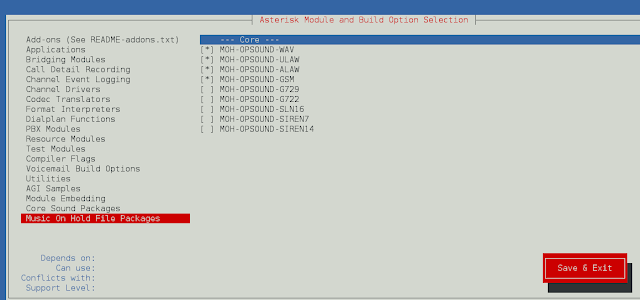f-string stands for formatted string. It had come up by Python Version 3.6 and rapidly used to do easy formatting on strings. F-string is a string literal having syntax starts with f and followed by {}. That placeholder used for holding variable, that will be changed upon the variable names and their values respectively.
There are already strings formats available like %-formatting, str.format(), or string.Template(). The main disadvantage of using these existed is that it is not well – easy to execute the implementation, so Python added up f-string due to its easiness of implementation with minimal syntax.
Consider this for example for all the 3 variants :
1. Using %-formatting
name = 'nightfury1'print('%s is Lazyroar a contributor' % (name)) |
Output :
nightfury1 is Lazyroar a contributor.
2. Using str.format()
name = 'nightfury1'print('{} is Lazyroar a contributor.'.format(name)) |
Output :
nightfury1 is Lazyroar a contributor.
3. Using f-string
name = 'nightfury1'print(f'{name} is Lazyroar a contributor.') |
Output :
nightfury1 is Lazyroar a contributor.
Approaches using f-string :
1. f-string expressions : It evaluates the string inside {} and returns the value.
name = 'nightfury1'post = 'Technical Content Writer Intern.'print(f'{name} is Lazyroar {post}') |
Output :
nightfury1 is GeeksforLazyroar Technical Content Writer Intern
2. f-string dictionaries : Since the dictionary contains key-value property. Hence, f-string use properties of a dictionary for string formatting.
GfG = {'name' : 'nightfury1', 'post' : 'Technical Content Writer Intern'}print(f'{GfG["name"]} is Lazyroar {GfG["post"]}.') |
Output:
nightfury1 is GeeksforLazyroar Technical Content Writer Intern.
3. f-string debug : Debugging the value inside the given expression evaluates output.
import mathx = 0.5 print(f'math.cos({x}) = {math.cos(x)}')print(f'math.sin({x}) = {math.sin(x)}') |
Output :
math.cos(0.5) = 0.8775825618903728 math.sin(0.5) = 0.479425538604203
4. f-string multiline : The f-strings are placed between round brackets so it evaluates them, each of the string is preceded with the f character and returns the result in multiple lines.
name = 'nightfury1'org = 'Lazyroar'post = 'Technical Content Writer Intern' gfg = (f'Name : {name}\n' f'Organization : {org}\n' f'Post : {post}.') print(gfg) |
Output :
Name : nightfury1 Organization : Lazyroar Post : Technical Content Writer Intern.
Padding and filling using f-string :
We can input and specify the format with digits after decimal or certain given number or DateTime, this is called f-string padding.
1. 0-padding : Here, we apply 0-padding by adding {variable : 0N} inside the f-string {} syntax, where N refers the total no. of digits.
for i in range(1, 5): print(f'The number is {i:02}') |
Output :
The number is 01 The number is 02 The number is 03 The number is 04
2. date-padding : Here, we also format the dates by using the DateTime module and adding up the desired format in {} like {date : directive}.
import datetimenow = datetime.datetime.now()print(f'Current Time : {now : %Y-%m-%d %H:%M}') |
Output:
Current Time : 2020-08-02 19:34
3. space-padding : Here, we apply spaces to a string like {variable : N} where N is total length. So if the given variable is ‘a’ and N is 4 then it will add extra spaces before the given variable.
for i in range(1, 5): print(f'The number is {i : 4}') |
Output:
The number is 1 The number is 2 The number is 3 The number is 4
4. justify-padding : As we know that by default strings are justified to the left. But with the help f-strings, we can justify them right by using {variable : >N} where N is the total length.
s1 = 'GeeksforLazyroar's2 = 'ksforLazyroar's3 = 'forLazyroar's4 = 'Lazyroar' print(f'{s1 : >13}')print(f'{s2 : >13}')print(f'{s3 : >13}')print(f'{s4 : >13}') |
Output :
GeeksforLazyroar
ksforLazyroar
forLazyroar
Lazyroar
We can input and specify the format with digits or symbols before and after the given string, this is called f-string filling.
1. hardcoded – filling : Here we add the symbol or filler as hardcoded in f-string syntax.
# left fillingprint(f'{"Lazyroar" :*>15}') # right fillingprint(f'{"Lazyroar" :*<15}') |
Output:
**********Lazyroar Lazyroar**********
2. variable – filling: Here we used f-string filling curly braces expression within the print() function.
width = 15filler = '*'for i in range(6, width): print(f'{"Lazyroar" :{filler}<{i}}') |
Output:
Lazyroar* Lazyroar** Lazyroar*** Lazyroar**** Lazyroar***** Lazyroar****** Lazyroar******* Lazyroar******** Lazyroar*********
Advantages of f-strings :
- It is the fastest string formatting method in Python.
- It is more readable.
- It is concise in nature.
- It is less prone to error which means there are fewer chances of error while strings formatting.
- It is less verbose i.e., contains less syntax in formatting.




